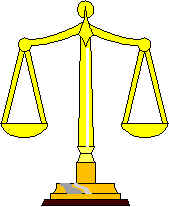Guidelines for Low Impact Aerobics
Low Impact aerobics was developed to take the drudgery and monotony out of exercising while making it exciting and enjoyable. But, it will only stay that way if you follow these important guidelines:
1. EXERCISE AT YOUR OWN PACE.
It is NOT true that exercise has to hurt to be doing any good. To exercise at the intensity which is correct for you:
Make sure you can always talk and carry on a conversation.
Do not exceed your exercise training rate.
Continuous exercise which raises your heart rate to its training level is needed to adequately strengthen your heart muscle. It is also important for another reason:
During exercise, the large muscles in your legs help pump blood back to your heart. To stop exercising suddenly can cause blood to "pool" in the legs and could cause dizziness. If you get tired, walk slowly.
3. ATTEND CLASS REGULARLY.
Your heart needs regular exercise to improve its fitness, just like your body needs food regularly to keep you nourished.
* The American Heart Association recommends aerobic exercise for a minimum of 3 times a week, 15 – 20 minutes each session. You are well on the way to achieving that if you attend regularly.
4. WEAR ATHLETIC SHOES WITH GOOD SUPPORT.
Remember that injuries to the legs may occur slowly and progressively. With improper foot support, you may not feel any pain at first, but as you continue, the hidden problems could be mounting up. An athletic shoe with good arch supports is recommended.
5. WARNINGS TO STOP EXERCISE
These warnings are not a cause for panic, rather they are guidelines to know when you may need to consult your physician to insure a safe program. Signs or symptoms may occur during or following exercise:
Pain or pressure in the chest , arm or throat
Abnormal heart action (irregular pulse, rapid pulse)
Dizziness, light-headedness, or loss of muscle control
* If these occur, consult your physician prior to resuming your exercise program.
|
Balancing Act |
If you were 190 pounds and sedentary when you started, you burned 2,280 calories a day to maintain that weight. (Men burn slightly more). If you ate 2,280 calories and burned 344 calories in a 1-hour walk, you burned 344 calories more than your body needed to maintain that weight-so you lost weight.
Say you reached 160 pounds. Now, you need only 1,920 calories to stay at your current weight.
But you’re still eating 2,280 calories and going for a 1-hour walk. Since you’re lighter your walk burns 292 calories. Now you’re eating more - 68 calories - than you’re burning.
Keep it up, and the scale will start moving in the wrong direction. Here’s how it adds up:
![]()
| If you weigh 190 and You eat: +2,280 calories You burn*: -2,280 calories You exercise:-344 calories Result: -344 calories a day and weight loss
|
|
| If you weigh 160 and You eat: +2,280 calories You burn *: -1,920 calories You exercise: -292 calories Result: +68 calories a day
|
This means a plateau, even though your eating and exercising habits haven’t changed. Over time you’ll regain some weight unless you shift the balance.
* To maintain your current weight if you’re sedentary
![]()
Start Your Exercise Program Today! |
|
|
|



